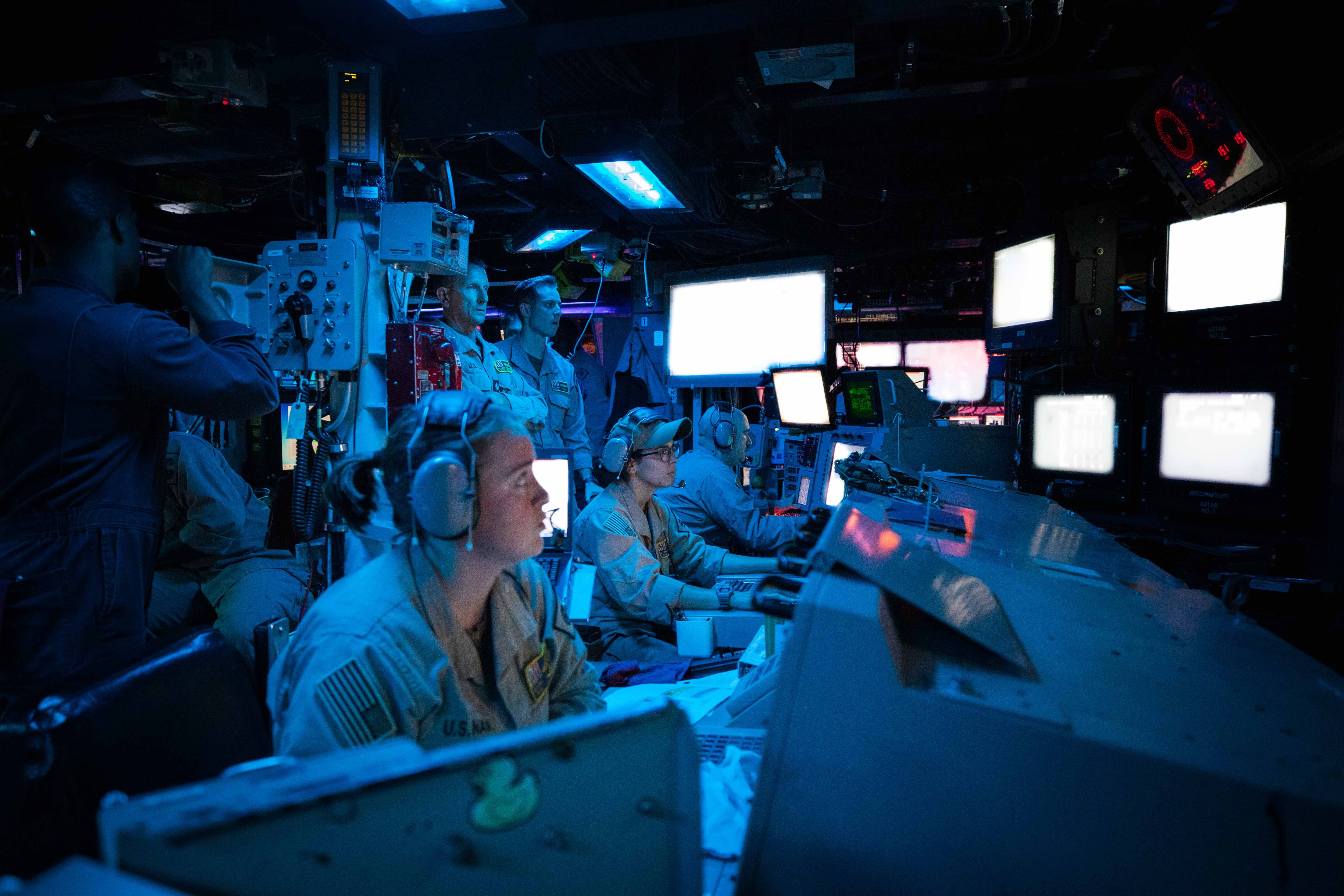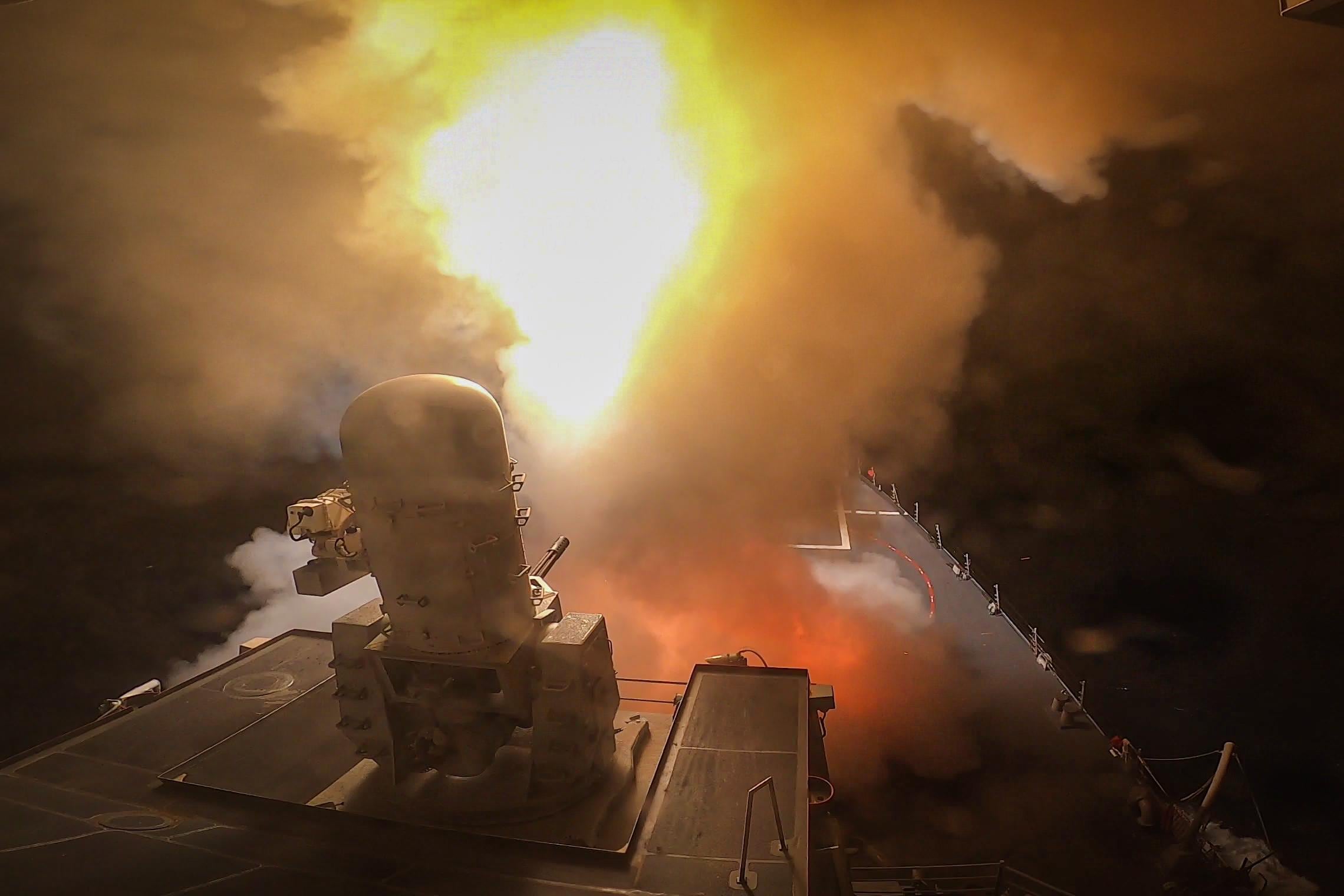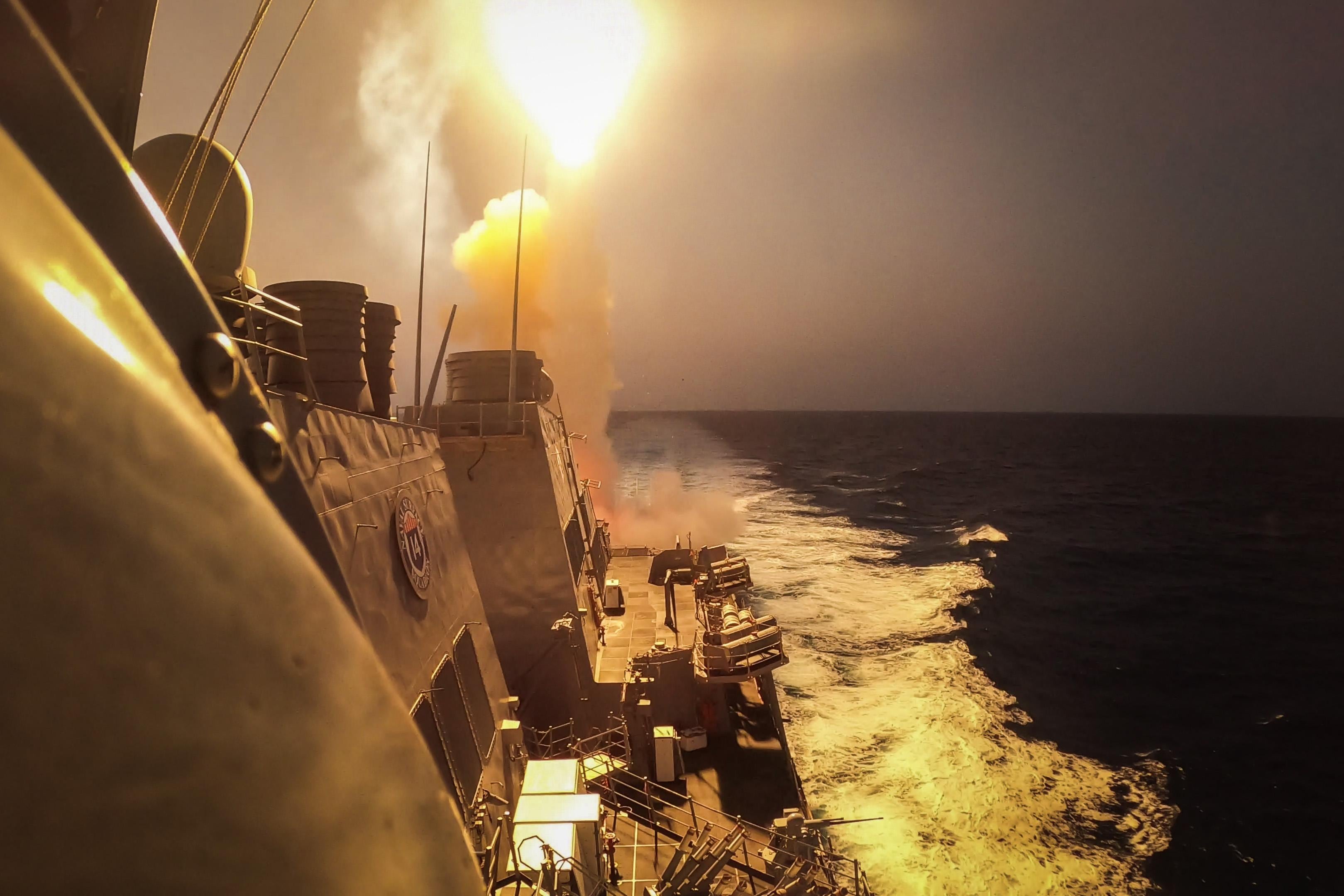Defense Secretary Lloyd Austin has directed the Dwight D. Eisenhower carrier strike group to steam to the Middle Eastern waters of U.S. Central Command as part of an effort to counter “recent escalations” by Iran and its proxy forces in the region, according to a statement released Saturday by the Pentagon.
The move will be the first time a carrier has operated in CENTCOM waters since the end of the Afghanistan war in August 2021.
Austin’s order follows the Navy destroyer Carney’s Thursday interception of cruise missiles and drones launched by Iran-allied Houthi rebel forces in Yemen and drone attacks against U.S. troops elsewhere in the region.
Carney’s intercepts of the ordnance, which Pentagon officials believe were heading toward Israel, potentially represents the first shots by the U.S. military in the defense of Israel during this conflict, which erupted after the Palestinian militant group Hamas’ attack on Israel on Oct. 7 that killed more than 1,300 Israeli civilians and at least 31 American citizens.
That conflict has provoked fears of a broader regional war involving Iran and its proxies.

Along with the Ike and its strike group, a Terminal High Altitude Area Defense, or THAAD, missile battery, as well as an unspecified number of Patriot missile battalions, are also being sent to the region, according to the statement.
Austin has also placed “an additional number of forces on prepare to deploy orders as part of prudent contingency planning, to increase their readiness and ability to quickly respond as required,” according to the statement.
The statement didn’t put a number to those additional forces, but the Pentagon announced this week that 2,000 troops have already been put on standby for quick deployment if needed.
“I will continue to assess our force posture requirements in the region and consider deploying additional capabilities as necessary,” Austin said in Saturday’s statement.
U.S. bases in Iraq and Syria were attacked by drones this week, and the Pentagon reported minor injuries and the death of a contractor who suffered cardiac arrest during one of the attacks.

The Eisenhower strike group left the East Coast last week, and was initially heading to the Eastern Mediterranean Sea, where the carrier Gerald R. Ford and its strike group are already on station and have had their deployment extended.
Meanwhile, CNN reported that Carney’s work to intercept the Houthi attack Thursday took place over nine hours and involved the ship shooting down four cruise missiles and 15 drones.
Carney had passed through the Suez Canal Wednesday and intercepted the missiles and drones in the Red Sea using SM-2 surface-to-air missiles, CNN reported.
The last time a Navy warship intercepted Houthi rebel launches was in October 2016, when fellow destroyer Mason executed countermeasures to stop an Houthi attack on the destroyer and other ships.
The Associated Press contributed to this report.
Geoff is the managing editor of Military Times, but he still loves writing stories. He covered Iraq and Afghanistan extensively and was a reporter at the Chicago Tribune. He welcomes any and all kinds of tips at geoffz@militarytimes.com.





